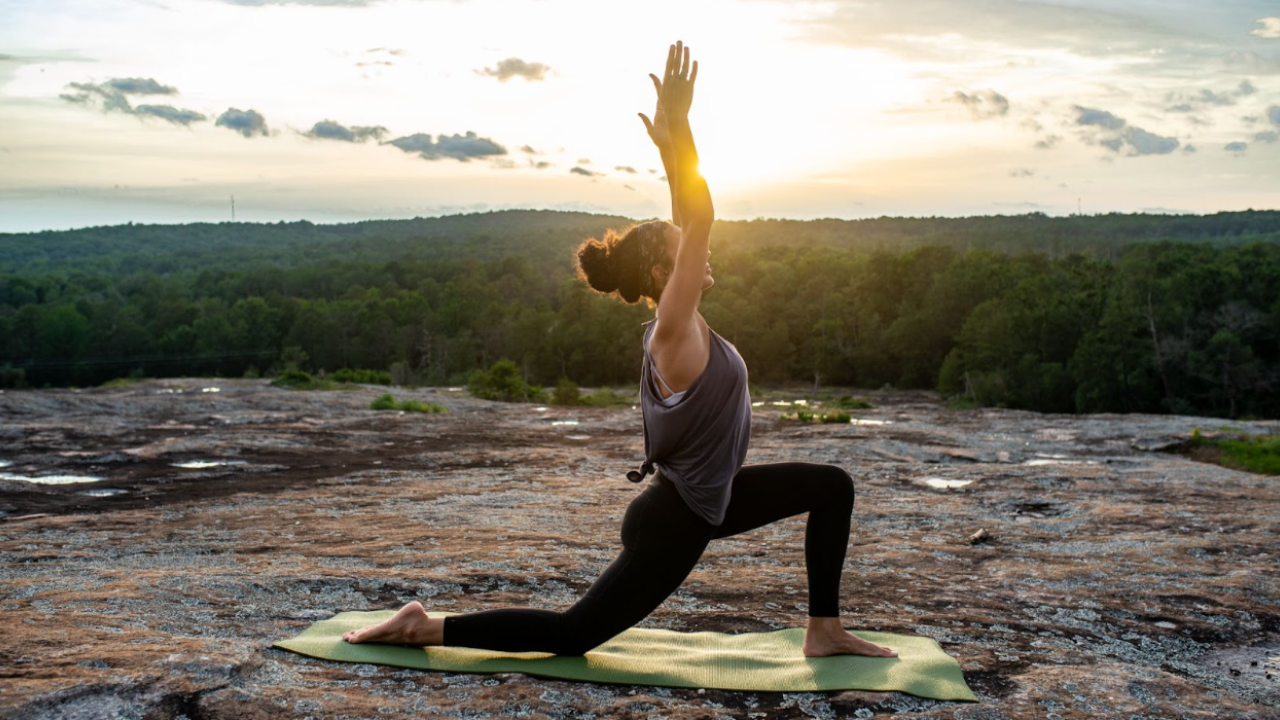3 Powerful Benefits of Yoga and Pain Management
Jul 11, 2023
Yoga is an ancient practice that utilizes breathwork (pranayama), steadying your mind (mindfulness/meditation), and moving your body (asana) for health and relaxation that benefits us in our modern day. My goal here is not to convince you how awesome yoga is, rather how its tenets are woven throughout our physical therapy interventions to help you heal and overcome your injury! In many ways, a consistent short practice of yoga-like movements and principles is not only prescribed to you as home exercise, but is the path to your recovery. Let’s not even call it yoga for a second. Let’s call it “mobility work”, that you do to help enhance your workouts or relieve your pain. Sure, it may involve bands or other tools to access, but the deep squat prep is called Malasana Yogi Squat, or the World’s Greatest Stretch, is also known as Lizard Lunge in yoga. “Tomato, tomahto,” for our purposes. However, I believe yoga instills the mind-body piece that connects your brain to your body and is your biggest bang for your buck. Here are three subtle (yet powerful) examples of those benefits in our healing below:
Awareness of the body. Let us define a few terms that you will hear in the worlds of physical therapy and yoga.
- Proprioception - the perception of position or movement of the body, which can be conscious or unconscious. An example of this is closing your eyes and lifting your arms overhead. If your arms reach out in front of you, that is a lack of proprioception if you think that is overhead.1
- Neuromuscular control - the unconscious trained response of muscle to provide stability around a joint(s) during movement, essentially to maintain balance during movement. An example of this is maintaining your balance in any standing poses like warrior 2 or crescent lunge while the arms may move or the trunk rotates.1
- Exteroception - external stimuli that wenprocess. An example of this is becoming aware of your surroundings at the beginning of a yoga practice or meditation by taking in your your environment, the smells, what you hear and see.2
- Interoception - collects information from all of the senses about the internal state of the body and is often connected to our emotions. An example of this is feeling your heart beat, noticing how your belly rises when you inhale, or maybe it is feeling of nervousness or excitement in our body.2
Pain does odd things to and in our body. Lorimer Moseley, a researcher on pain, describes that “it can influence how your brain controls your movement and how you perceive your body”.3 It can affect all of the things above leading to impaired awareness of where our bodies are in space and how we are processing feedback from our internal senses. Just as physical therapy intervention seeks to reset and reverse these effects, yoga can be a way to maintain gains seen in your physical therapy sessions.
Breathing as a coping mechanism. We can use our breath to anchor our mind when we feel like we cannot control our thoughts, and we can use it to anchor our physical body when pain and dysfunction are spiraling. As a pelvic health physical therapist, I teach pregnant people how to use their breath through labor to not only cope with pain but also move their child through and out of the pelvis for vaginal deliveries. I also teach clients with chronic low back pain how to anchor themselves to their breath to help decrease pain and stress. When we consciously breathe, this taps into our parasympathetic nervous system (PNS) which helps us “rest and digest”. In high levels of pain, chronic pain, or chronic stress situations, our nervous system tends toward our sympathetic nervous system (SNS) which is necessary for “fight or flight” when there is an actual emergency. When we access our breath we can volitionally calm ourselves down and tell our body that we are safe.
Acceptance of where you are today. Yoga creates a perspective shift. You may not like that you are in pain, or that your knee doesn’t bend all of the way, but you can choose to accept where you are today so you can pave a new path tomorrow. This is the emotional and spiritual piece of being in your body that you have today, not the one that you had when you were 20 years old or the one that you are expecting to have later in life. Psychologically, there is a link between negative thinking and higher pain levels in individuals living with chronic pain. However, the common phrase rings true: “Pain is inevitable, suffering is a choice.” When we become consciously aware of the vicious cycle of negative thinking, leading to anger/anxiety/sadness/depression, leading to muscle tension and stress, we can use these practices to stop the cycle and practice acceptance.4
There are many other obvious benefits to a yoga practice including increasing your strength and flexibility by enhancing the access and connection to your muscles, improving your balance through better nerve communication, improving your hormones and endocrinology around pain, happiness, and stress reduction.
If you are in the Atlanta area and are interested in tapping into all of these benefits, join our upcoming 4-week series on Yoga for Pain Management beginning July 31st, 2023. Limited spots available.
In health,
Dr. Krystal PT, DPT, CMTPT, RYT-200
- https://www.sciencedirect.com/topics/neuroscience/proprioception-and-kinesthesia#:~:text=Proprioception%20describes%20the%20awareness%20of,in%20relation%20to%20the%20body.&text=Kinesthesia%2C%20however%2C%20refers%20to%20the,direction%2C%20or%20weight%20of%20movement
- https://www.ncbi.nlm.nih.gov/pmc/articles/PMC4456570/#:~:text=The%20perception%20of%20environmental%20stimuli,%2C%20acoustic%2C%20or%20tactile%20stimuli
- https://static1.squarespace.com/static/57260f1fd51cd4d1168668ab/t/590dca266b8f5b01a7f97ceb/1494075961206/recovery+strategies+pain+guidebook+2017.pdf
- https://www.psychologytoday.com/us/blog/some-assembly-required/201401/pain-is-inevitable-suffering-is-optional
Let us help you figure out to live your best active life today!
Remember, Movement is Medicine!

